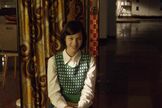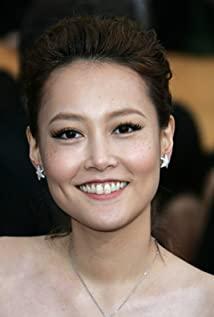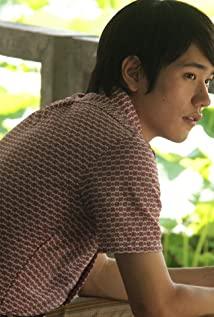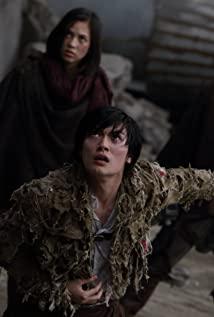Compared with the theme of the movie and the novel, the movie is undoubtedly thinner, perhaps due to the time limit. The director wants to express and express only the theme of love, that is, the two main lines floating on the surface of the novel: Naoko and Watanabe ; Midoriko and Watanabe. On the theme, the novel presents a broader and profound theme of emotion and life. The existence of each character has a long-term survival problem behind the destruction. Naoko, Kiyuki, Reiko, and Midori each have the experience of losing love in their lives, and their difference lies in their attitudes towards these pains. Attitude determines their final choice of life and death. After facing the pain of the death of his lover twice, the hero has a new understanding of death after learning about the strong survival of Reiko and Midori: "Death is not the opposite of life, and death lurks in our lives."
2. Narrative method
The movie also uses Watanabe's first-person perspective, but the narrative method is sequential, starting from the 17-year-old high school period, the novel is a flashback narration of the thirty-seven-year-old Watanabe's memory after twenty years. The difference directly affects the depth of the film's theme. The sequence of the film makes it more inclined to be a brutal youth film. It lacks the reflection and commemoration of adults' narration, which inevitably makes the characters appear superficial.
Compared with three stories
and two main lines, the entanglement between Naoko and Watanabe is the focus of the performance. The director uses several important events in the novel to express, roughly three: Naoko's birthday; several visits to the sanatorium; travel. These three events are basically consistent with the description of the novel, but the director's focus is obviously also the emotional changes displayed by the characters at the moment, but the deep reasons behind the changes are not mentioned. For example, the reason why Naoko chose to die is not only because of losing Muyue, and her dearest sister, the two closest people in her life have left inexplicably, making her psychologically afraid to open her heart to the people and the world around her, she is afraid of losing again, She didn't want to be proven by the death of her lover again and again that she was unimportant and worthless.
In the second main line, Midoriko and Watanabe, the director's performance was rough, and the emotional development of the two was not presented enough. The relationship between the two developed on the basis of knowing enough to each other. Dialogue is very important, and the director's choice of dialogue is only biased towards Midoriko's external language personality, such as being very concerned and open about sexuality, while Midoriko is about her own growth and the family's narrative is what Watanabe really understands. She understands the key to her, especially the part where Midori takes care of her father and Watanabe helps. The director also flashes by, which makes Midori's character incomplete, and the repression of life behind her willfulness, she speaks directly and naked The depression behind the lack of love and lack of release, etc. are not presented. And the director's adaptation of the scene where Midoriko and Watanabe were angry at the bar was a failure. It was inexplicable and abrupt that Midoriko was angry because of Watanabe's words. If Midoriko was angry, it must have touched her and cared. things, and Watanabe's words "be quiet, pay attention to the occasion" is an innocuous sentence, the reason why Midori is angry, reluctantly, maybe because of the sadness of his father's death, he needs to tell Watanabe those jokes and release himself , But Watanabe's response disappointed her, but it didn't make sense for the two to ignore each other for a long time. The performance of the novel is very reasonable. The reason is that after Watanabe moved, he was tired of looking for a job and he was depressed because of the lack of response from Naoko, so he forgot to tell Midori about the move. Not getting angry because of missing the mood, this plot will further enhance the relationship between the two.
The main characters in the four-character
movie are: Naoko Watanabe Midoriko Secondary characters: Naoko Kizuki Hatsumi
Reiko has more characters in the novel than the movie, and the performance capacity of the characters is also large, such as Reiko's past, "The Expendables", Hatsumi, etc. .
The character of Watanabe has a complete performance in the movie, especially in the part where he gets along with Naoko. His emotions are described in depth. The most touching thing is Watanabe's decadence at the seaside after Naoko's death. Traveling in those scenes, the icy and huge waves slapped the coast, and Watanabe's "old" face was roaring and crying. Surrounded by pain. However, the part between Watanabe and Midori lacks convincing, and the emotional history of the two is not well established. That is to say, there is not enough evidence for the two to love each other. Therefore, Watanabe has no sense of contradiction and self-blame in this part. Performance.
Naoko's performance in the movie is also relatively complete. Her trembling voice, clear eyes, and angel-like pure form are all shown, but her suicide is not strong enough, and she lacks the foreshadowing of her sister's suicide by hanging. In the novel The successive departures of Muyue and her sister have deepened the understanding of this character and made her death more convincing.
Midori is a superficial character in the movie. Both her portrayal of Midori and her relationship with Watanabe are rough. Midori is a person who has always lived in depression, but has always been hopeful and yearning for life. She is independent. , strong, sensible, but at a young age, she took on the responsibility of supporting the family, taking care of patients, bookstores, studying hard by herself, working part-time to make money, these are the reasons for her willful openness in front of Watanabe, and these are precisely It is an important factor that Watanabe fell in love with her, but the film lacks the excavation of Midoriko's life.
Regarding the film performance of secondary characters, Yongze's part is more lengthy, his uninhibited performance is more than the display of his talent, and the tragedy between him and Hatsumi is concise and powerful. Reiko was barely excavated in the movie, so that her last bed scene with Watanabe was very abrupt, without any foreshadowing, and Reiko's background was the main body of this character. From this point of view, the last scene of the character Reiko is very superfluous. There is a lot of color in the front and behind the water. The audience may misunderstand and discount both Reiko and Watanabe.
Five great things about movies
The biggest attraction of the movie is the excellent description of the scenery, and the music also adds a lot to it. The picture is very beautiful and sophisticated, the scenery of the four seasons changes, the forest with symbolic meaning, the snow scene where Naoko's life is gradually drying up, the dark branches and Naoko's thin feet at the end, all render the film with a strong icy atmosphere for the audience's visual and emotional impact. Psychologically shocking. In terms of music, Naoko's exclusive emotional atonal string expresses his depressed nerves, trance and sadness, while Midori and Watanabe's rock and jazz set off the spiritual tone of the two very well.
View more about Norwegian Wood reviews











